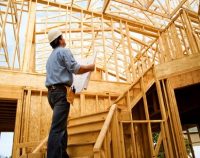Home Builders Guide to Earthquake Resistant Building Design: 5 PDH
$30.00
The student must take a multiple-choice quiz consisting of twenty (20) questions at the end of this course to earn PDH credits.Instructor: Raymond Bosek, PE
In this course, the student will review Chapters 1-4 from “Homebuilders Guide to Earthquake Resistant Design and Construction”, FEMA 232 – June 2006 prepared by the Building Seismic Safety Council for the Federal Emergency Management Agency of the Department of Homeland Security.
The student must take a multiple-choice quiz consisting of twenty (20) questions at the end of this course to earn PDH credits.
SPECIFIC KNOWLEDGE OR SKILL OBTAINED
This course teaches the following specific knowledge and skills:
- Background & History
- Above-Code Recommendations
- International Residential Code & IRC Seismic Design Categories
- Building Response & Concepts Concerning Site
- Other Hazards including Coastal Hazards
- Earthquake Resistant Requirements
- IRC General Earthquake Limitations
- Load Path
- Lateral Capacities
- House Configuration Irregularities
- Foundation Requirements including Concrete Foundations & Masonry Foundations
- Special Soil Conditions
- Foundation Resistance to Sliding Loads
- Special Considerations for Cut & Fill Sites
- Foundation Design and Reinforcement
- Interior Braced Walls Anchoring
- Floor Design & Construction including Wood Frame, Cantilevered & Concrete Slab-On-Grade
- Requirements for Blocking
- Floor Sheathing
CERTIFICATE OF COMPLETION
You will be able to immediately print a certificate of completion after passing a 20 question multiple-choice quiz. The quiz can be retaken unlimited times until a passing grade of 70% or better is earned. This course satisfies 5 professional development hours (PDH) of continuing education.
Related Courses
Lessons Learned-Design and Construction of Buildings: 3 PDH
$18.00 Add to cartIn this course the student will review lessons learned from post building occupancy evaluations to understand common building design and/or construction flaws and review essential tips to correct, avoid and/or mitigate these occurrences.Instructor: Raymond Bosek, PESPECIFIC KNOWLEDGE OR SKILL OBTAINED
This course teaches the following specific knowledge and skills:
- Explain overall building design and construction best practices
- Discuss general building site and landscape guidelines
- Discuss envelope/structure essential tips
- Understand architecture/interiors best practices
- Describe mechanical/plumbing lessons learned
- Explain lighting/electrical essentail tips
- Explain operational fundamentals as relates to accessibility, durability, reliability, and maintainability/cleanability
CERTIFICATE OF COMPLETION
You will be able to immediately print a certificate of completion after passing a 15 question multiple-choice quiz. The quiz can be retaken unlimited times until a passing grade of 70% or better is earned. This course satisfies three (3) hours of professional development (PDH).
Preview CourseClick “Preview Course” to view prior to purchaseClick “Add to Cart” to purchaseFoundations in Expansive Soils: 6 PDH
$36.00 Add to cartThis course presents guidance and information for the geotechnical investigation necessary for the selection and design of foundations for heavy and light buildings constructed in expansive clay soil areas. The information in this course is generally applicable to many types of structures such as residences, warehouses, and multi-story buildings. Emphasis is given to the maintenance of an environment that encourages constant moisture conditions in the foundation soils during and following construction. Special attention must always be given to specific requirements of the structure such as limitations on allowable differential movement.Instructor: Raymond Bosek, PEThis course presents guidance and information for the geotechnical investigation necessary for the selection and design of foundations for heavy and light buildings constructed in expansive clay soil areas. The information in this course is generally applicable to many types of structures such as residences, warehouses, and multi-story buildings. Emphasis is given to the maintenance of an environment that encourages constant moisture conditions in the foundation soils during and following construction. Special attention must always be given to specific requirements of the structure such as limitations on allowable differential movement.
SPECIFIC KNOWLEDGE OR SKILL OBTAINED
This course teaches the following specific knowledge and skills:
- Guidelines of the geotechnical investigation and analysis
- Field exploration
- Laboratory investigations
- Methodology for prediction of volume changes
- Selection of the type of foundation
- Structural details of design procedures provided for reference
- Methods of minimizing foundation movement
- Construction techniques and inspection
Remedial repair of damaged structures
CERTIFICATE OF COMPLETION
You will be able to immediately print a certificate of completion after passing a 20 question multiple-choice quiz. The quiz can be retaken unlimited times until a passing grade of 70% or better is earned. This course satisfies 6 professional development hours (PDH) of continuing education.
Preview CourseClick “Preview Course” to View Prior to PurchaseClick “Add to Cart” to Purchase and Access Quiz




